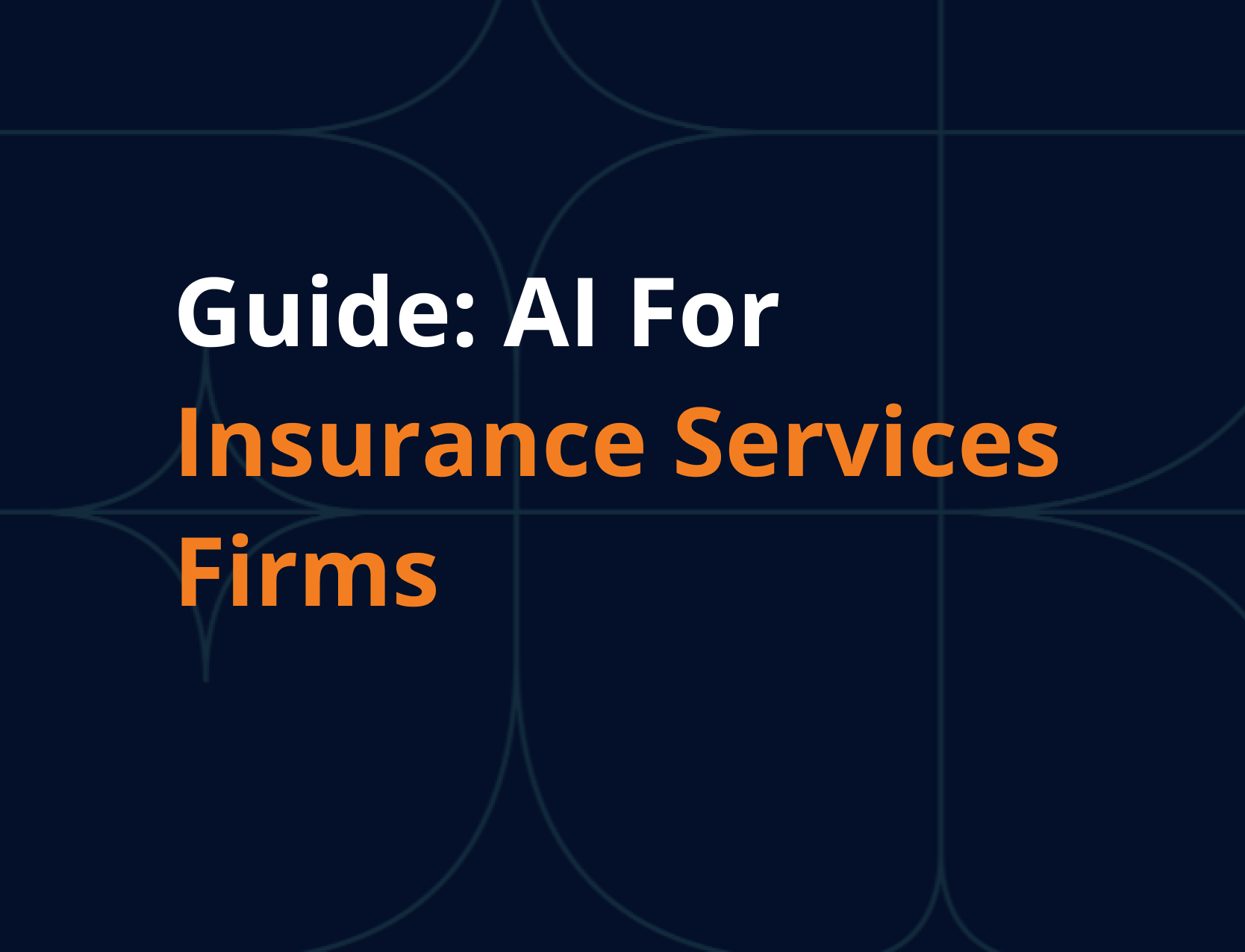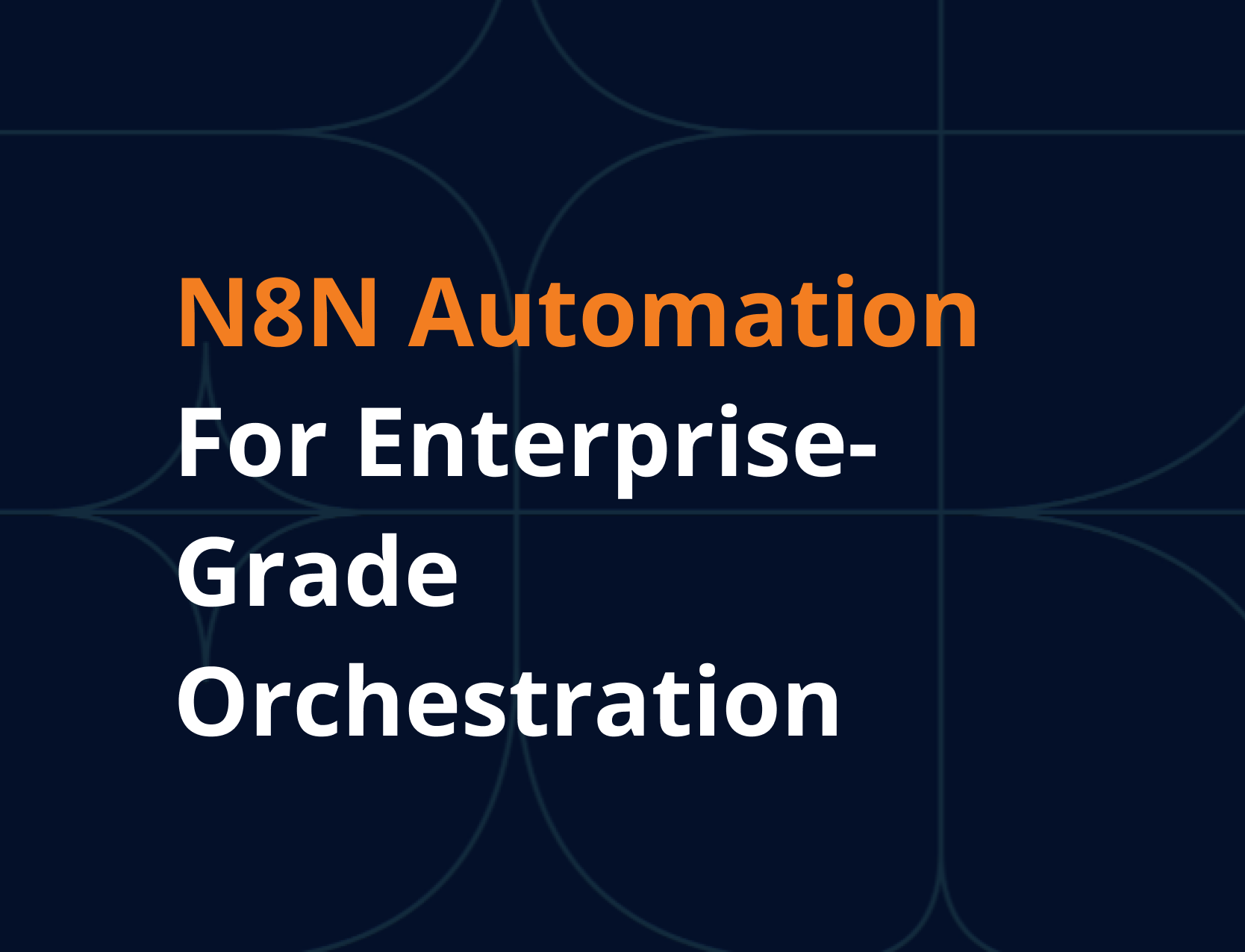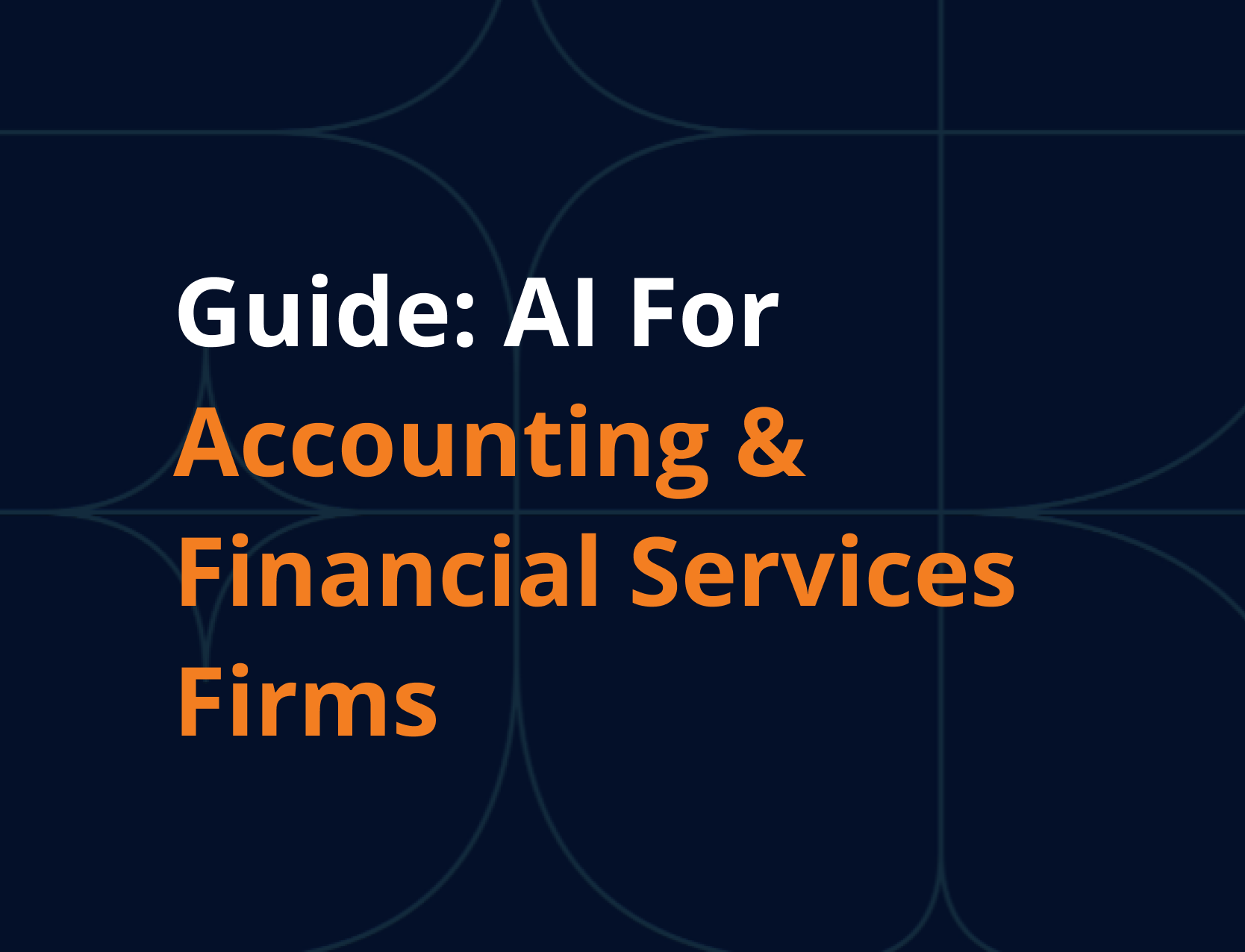As an insurance executive, you’re navigating an unprecedented convergence of challenges that would test any leader’s resolve. AI for insurance services represents the strategic solution to these mounting pressures. The talent crisis looms with 50% of your current workforce retiring within the next decade, leaving behind 400,000+ unfilled positions. Meanwhile, customers demand instant service, regulatory compliance grows increasingly complex, and operational costs continue climbing despite your best efforts.
You know that behind every wasteful process is actual human consequence—overstretched staff, frustrated customers, and the increasing burden on your shoulders to make growth and sustainability equal. The burden of these issues isn’t just business operations; it’s personal. Each delayed claim is a family waiting for economic respite. Each manual process that takes hours rather than minutes shows time your skilled team could dedicate to strategic value creation rather than drudgery.
The question isn’t whether change is needed—it’s how to transform your operations through AI for insurance services while preserving the human relationships that remain the cornerstone of insurance success.
Understanding the Critical Insurance Industry Challenges
The insurance landscape has reached a transformational crossroads where traditional approaches simply cannot keep pace with modern demands. This perfect storm of challenges demands immediate attention and strategic action.
Claims processing continues to take 5 days on average by hand, when customers increasingly demand resolution in hours, not days. Your underwriters are devoting as much as 40% of their time to data quality problems instead of using their skills to analyze tricky risk. This inefficiency in operations sets off a chain of issues that radiate throughout your entire organization.
Administrative overhead devours huge amounts of resources, with manual processes involving numerous touchpoints that drive both cost and error rates up. The sobering truth is that cost performance at property and casualty carriers hasn’t increased in 15 years, even when large amounts of money were spent on technology and process optimization. This stagnation means the need for dramatic change, not evolutionary increment.
The crisis of talent shortage only magnifies each other operating issue that you’re dealing with. Over 50% of your existing insurance talent is retiring within the next 10-15 years, exposing you to knowledge transfer issues that will disable institutional wisdom. New hires demand long periods of training, which only adds to the burden of already stretched teams.
Customer expectations have evolved dramatically in our digital-first world. 68% of insurers prioritize technology that improves customer experience, recognizing that today’s policyholders expect 24/7 service availability and instant claim resolution. Complex policy terms and lengthy approval processes increasingly frustrate customers who’ve grown accustomed to seamless digital experiences across all other industries.
The burden of regulatory compliance keeps growing, necessitating high investments in monitoring and reporting capacity. Expanded focus on data privacy, cybersecurity, and climate disclosures command resources that might otherwise be directed to customer service and growth initiatives.
The Devastating Human Cost of Operational Inefficiency
Behind each processing bottleneck is a deep human tale that goes far beyond raw figures and performance levels. Your claims handlers point to data entry as a source of significant frustration in 49% of instances, the symptom of the greater problem of highly skilled professionals wasting their precious time on routine tasks instead of using their know-how where it will yield the greatest benefit.
Staff burnout from repetitive processes forms a vicious cycle that undermines your company’s foundation. While seasoned employees are overwhelmed by manual workloads, their job satisfaction drops to new lows, causing increased turnover rates that fuel the talent shortage epidemic. Newly hired staff, left to struggle through complicated manual processes with inadequate support, fail to meet productivity levels, adding more pressure to your whole team.
Customer frustration directly equates to quantifiable business impact that impacts your bottom line. When there are delays in claims processing, policyholders don’t merely feel inconvenienced—they lose basic trust in your company’s ability to stand there for them when it counts the most. This loss of trust is expressed through customer churn, negative reviews online, and reduced referrals that dramatically affect your growth curve and reputation in the market.
The cost burden far exceeds short-term operating expenses. Processing claims costs 48% more than it needs to, due to avoidable inefficiencies, and the pressure on continually keeping service levels up on tight resources builds unsustainable cost profiles. Executive groups are caught between having to invest in transformation in the here and now and the pressure in the short term to contain costs.
Your staff are being held back by cumbersome systems and processes that block them from providing the kind of outstanding service they can offer. Skilled professionals who came on board your firm to make a real difference in the lives of customers find themselves instead swamped with clerical activities that give them little job satisfaction or career progression prospects.
AI for Insurance Services: Your Strategic Transformation Partner
AI for insurance products essentially redesigns the storyline around workforce revolution, with technology as a strong tool for augmentation, not replacement danger. This strategic response tackles myths that obscure AI conversations and proves the concrete advantages of human-AI partnership.
67% of insurers are experimenting with Large Language Models precisely to upgrade workforce capacity, not to cut headcount. This is an evolving recognition that AI is a force multiplier of human capability, not a replacement for human judgment and compassion.
Think about the revolutionary shift the claims adjuster’s job takes with the help of AI in insurance services. Rather than wasting hours on drudgework data entry and document checking, adjusters can direct their skill toward hard case analysis, customer connection, and fraud detection—those areas where human empathy and intuition are always truly irreplaceable. AI takes over 27% of routine tasks in insurance, freeing your team to utilize their knowledge where it adds the most value.
The workforce augmentation approach addresses multiple organizational challenges simultaneously. While AI handles routine document processing and initial data analysis with perfect accuracy, your underwriters can focus their skills on nuanced risk assessment and strategic client relationship building. AI saves insurers up to 22% annually in operational costs, creating valuable resources that can be reinvested in employee development, training programs, and enhanced customer service capabilities.
AI in insurance operations opens up unprecedented professional development and career opportunities. Workers who formerly used to spend their time entering data can learn sophisticated AI monitoring, intricate analysis, and strategic choice-making skills. This human job upgrade is making more rewarding professional career paths while significantly enhancing job satisfaction and turnover rates throughout your organization.
The implementation process must be well planned and carefully considered. 75% of insurance firms globally invest in AI-based training modules so that their employees develop in sync with the technology. Such heavy investment proves organizational intent to develop employees and not replace them, leading to real adoption and minimizing natural resistance to change.
Understanding your specific transformation potential begins with honest assessment of current inefficiencies and opportunities. Calculate your AI transformation ROI using our comprehensive assessment tool designed specifically for insurance executives: Billable Hours Optimization & AI Automation ROI Calculator. This powerful tool quantifies the specific impact AI could have on your operations, providing concrete data to support critical transformation decisions.
Industry-Wide Impact and Results
Most critically, perhaps, both Google and Microsoft implementations aimed at demystifying rather than replacing expertise and human judgment. AI processes language translation, document handling, and preliminary data analysis efficiently, while human agents concentrate their abilities on relationship management, sophisticated problem-solving, and strategic advisory services that need emotional intelligence and experience in the industry.
The cost savings through these high-performing rollouts prove the practical worth of strategic AI adoption. Pioneers in adopting AI save £21 per claim, and claims processing is cut up to 75% by using smart automation. These outstanding gains are not made at the cost of service quality—rather, they support superior-quality service by enabling human professionals to allocate their time and energy toward cases that demand judgment, empathy, and advanced problem-solving abilities.
End-to-End AI Solutions for All Insurance Functions
AI for insurance business goes far beyond the mere automation of processes and provides end-to-end transformation potential for every function of your insurance business. The strategic advantage is to recognize how each of the key functions can be elevated while retaining the critical human factors that make your organization stand out in a competitive market.
Revolution in Claims Processing through AI
AI radically reworks claims handling from first notice of loss to last settlement, producing frictionless processes that are advantageous to both customers and employees. Automated intake processes can intelligently process notifications from various sources—email, customer portals, phone, and mobile apps—utilizing sophisticated natural language processing to capture applicable data without requiring manual entry of data. Processing time for claims can be shortened by as much as 75%, while at the same time preserving or enhancing accuracy and compliance levels.
Intelligent document processing extracts and validates key information from policies, medical reports, police reports, and supporting documents with great accuracy automatically. Smart routing and triage systems route claims to the right adjusters automatically according to complexity, claim type, and workload allocation, maintaining effective resource utilization while prioritizing high-priority cases that need priority handling.
Advanced Underwriting Enhancement
AI for insurance products enhances underwriting decisions by analyzing vast amounts of data to find underlying risk patterns and opportunities for price optimization that may elude human analysis. Instead of replacing valuable underwriter know-how, AI performs exhaustive initial data analysis and returns risk scoring, enabling veteran underwriters to direct their expertise as necessary in challenging cases demanding human judgment and industry experience. Pre-trained models can usually offer the shortest deployment timelines with the best accuracy rates versus developing bespoke solutions from the ground up.
Customer Service Transformation
AI-driven customer support runs like clockwork 24/7, answering mundane questions with flawless uniformity while smartly pushing tricky issues to human representatives when empathy and problem-solving are needed. This strategic leveraging of AI ensures customers get instant answers to straightforward queries while maintaining precious human engagement for instances calling for emotional intelligence and complex problem-solving abilities.
Fraud Detection and Prevention
Sophisticated analytics flag possible fraud patterns by examining intricate patterns in past claims records, automatically indicating suspicious cases for thorough human investigation while expediting clearly legitimate claims. This smart solution significantly enhances detection rates with less false positive that may unduly delay legitimate claims and infuriate honest policyholders.
Regulatory Compliance Automation
AI technologies are constantly tracking changing regulation updates and updating compliance processes automatically, keeping your organization up to speed with sophisticated requirements without wasting valuable human capital. This automation considerably lightens compliance burden while reducing regulatory risk and releasing staff to concentrate on customer-facing tasks.
Every solution integrates smoothly with current workflows and legacy infrastructure, eschewing the enormous disruption commonly associated with extensive system revamps. The planned phasing implementation methodology enables your staff to transition gradually while gaining confidence in AI functionality and enjoying tangible results at every step.
Measuring Success: ROI and Key Performance Indicators
Measuring the AI for insurance services’ impact must involve holistic measurement against operational, financial, and human metrics that capture the real value of workforce augmentation and not reductionalist cost-cutting measures.
Operational Efficiency Metrics
Monitor quantifiable processing time savings, accuracy gains, and throughput improvements in all major functions and departments. AI can save insurers 22% a year in operational expenses, whereas 48% of cost reduction in operations within claims proves the significant financial effect of efficiency gains realized through strategic AI adoption.
Document processing speed gives real-time visibility into AI effect throughout your organization. Claims that once took several days to be reviewed for the first time can be typically processed with high accuracy in hours, while keeping or even raising accuracy rates. Underwriting cycle times also experience the same kind of dramatic gains as AI processes initial data analysis and produces stable risk scoring with ease.
Customer Experience Indicators
Track customer satisfaction scores, Net Promoter Scores, and complaint handling times to make sure AI adoption supports improved, not decreased, service quality and customer relationships. 68% of insurers value technology that enhances customer experience, aware that operational excellence must directly equate to quantifiable customer value and satisfaction.
Response time metrics measure both first acknowledgment speed and ultimate resolution effectiveness, so customers see tangible service improvements that distinguish your organization. Customer retention rates and referral behavior deliver essential longer-term measures of transformation success and market position.
Employee Satisfaction and Development Tracking
Monitor job satisfaction ratings, engagement levels, and career growth rates to guarantee that workforce augmentation meets its objectives of empowering employees instead of displacing them. Completion rates in training, achieving professional certifications, and internal mobility rates measure employee development against AI implementation milestones.
Financial Performance Analysis
Aside from direct operating cost reductions, measure revenue growth, share expansion, and profitability improvement resulting from increased capabilities and enhanced customer service delivery. Measure new product development velocity, market responsiveness, and innovation metrics that show AI’s strategic contribution over mere operational efficiency.
Compute your unique AI potential for transformation with our comprehensive ROI evaluation tool tailored expressly for insurance business executives: Billable Hours Optimization & AI Automation ROI Calculator. It is a formidably robust analytical instrument which is offering you personalized analysis based on your existing operations so that you get a clear insight into the particular quantifiable effect AI for insurance services can have on your company’s performance and competitive standing.
Future-Proofing Your Insurance Operations Through Strategic AI Adoption
The insurance industry stands at a critical transformational crossroads where AI adoption fundamentally determines competitive positioning for the next decade and beyond. 91% of insurance companies will have adopted AI technologies by 2025, making early strategic adoption a competitive necessity rather than an optional luxury for forward-thinking organizations.
Market Growth and Strategic Opportunity
The insurance AI market is expected to reach $35.76 billion by 2029 from $7.71 billion in 2024, a phenomenal 36.6% compound annual growth rate. This phenomenal growth is not only due to technological development but also core changes in customer expectations, competitive forces, and operational opportunities that will redefine the entire industry landscape.
Organizations that adopt end-to-end AI for insurance services transformation place themselves ideally to reap disproportionate value from this unprecedented market growth. Early movers create essential data benefits, process efficiencies, and customer connections that become hard for competitors to make equal and then surpass.
Insurance customers today expect advanced digital-first experiences that are on par with the best services in every industry. 77% of insurance organizations are now at some level of AI adoption, which shows widespread acknowledgment of customer-led transformation imperatives and competitive pressures calling for instant strategic action.
Success in markets of the future demands carefully balancing smart automation with retained human knowledge so that your organization is able to provide operational efficiency along with emotional understanding valued by customers. Skillful utilization of AI, as a tool to augment human ability, rather than completely displace it, are the firms that will own markets.”
Workforce Evolution and Talent Strategy
The persistent talent shortage crisis necessitates the adoption of AI for insurance services as an absolute necessity for organizational survival and success. Instead of perceiving AI as a threat to their workforce, truly innovative insurers see AI as the core solution to talent shortage and skill gaps. 50% of the current insurance workforce will be retiring by 2036, and hence workforce augmentation through AI is a survival and success imperative.
Preparing your workforce for the inevitable change involves huge continuous investment in extensive training and professional development schemes. 3 strategies for preparing the insurance workforce for the age of generative AI are extensive training programs, practical experience with AI tools, and cultural adjustment to productive human-AI collaboration that drives job satisfaction and career progress.
Strategic Partnership and Technology Investment
Developing sophisticated AI capabilities takes specialized knowledge, innovation support, and collaborative partnerships with organizations that comprehend complex insurance operations and leading-edge AI technology. The most effective transformations always derive from collaborations with holistic solution providers and not disparate point solutions with integration issues.
Your AI for insurance services transformation partner should offer not just technology implementation but ongoing innovation, deep industry expertise, and genuine commitment to your workforce’s success and professional development. This partnership approach ensures your AI capabilities evolve continuously with market changes and technological advancement while maintaining competitive advantages.
Long-Term Strategic Vision
The next decade will be dominated by insurance companies that see AI for insurance services as strategic enablement and not mere cost savings. These forward-thinking organizations will leverage AI to increase market reach, deepen customer relationships, and develop new value propositions that are innovative and differentiated while enabling their people to concentrate on uniquely human contributions that make their brand stand out.
The choice of critical importance isn’t adoption of AI—it’s how fast and well you can revamp your operations without losing the critical human aspects that set your organization apart from others. The window of opportunity for competitive advantage through AI transformation is quickly closing, which requires immediate strategic action for long-term market success and survival.
Ready to start your revolutionary AI experience? Work with an end-to-end AI for insurance services provider that appreciates intricate insurance processes and values the empowerment of employees over replacement. Determine your potential for transformation and take the first strategic move towards future-proofing your operations: Billable Hours Optimization & AI Automation ROI Calculator.
Your employees, customers, and competitive standing all rely solely on the strategic choices you make today regarding AI transformation. Select a reliable partner dedicated to your success, employees’ professional development, and customer satisfaction. The future of insurance is being authored today—ensure your company is leading this revolution instead of struggling to catch up. Learn more abour our AI services for professional firms.
References:
- https://coinlaw.io/ai-in-insurance-industry-statistics/
- https://www.hanoversearch.com/blog/top-risk-factors-facing-the-insurance-industry-in-2024/
- https://www.microsoft.com/en/customers/story/1704032763195644814-ergo-azure-insurance-en-greece
- https://www.allianz.com/en/mediacenter/news/articles/250225-ai-at-allianz-building-a-future-ready-workforce.html
- https://cloud.google.com/customers/hdfc-ergo
- https://www.mckinsey.com/industries/financial-services/our-insights/the-future-of-ai-in-the-insurance-industry



